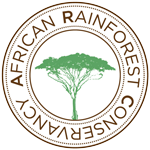Reports from the Field provides regular updates about projects our field partner, the Tanzania Forest Conservation Group is undertaking – everything from environmental education to tree planting to creating forest patrols for monitoring the illegal use of Tanzania’s forests. In this first report we share the progress of one of TFCG’s biggest projects — one that takes on the challenge of reducing deforestation and forest degradation through the development of a Community Carbon Enterprise.
Project Summary: In 2009, the Tanzania Forest Conservation Group (TFCG) and Community Forest Conservation Network of Tanzania (MJUMITA) partnered to launch this five-year project. REDD (Reducing Emissions from Deforestation and Forest Degradation) is a United Nations global initiative that aims to decrease greenhouse gas emissions and mitigate global climate change in developing countries. The project intends to reduce deforestation and forest degradation by creating direct financial incentives through the global carbon market that will motivate a network of Tanzanian communities to conserve and manage their forests more sustainably. Preventing deforestation could reduce global CO2 emissions by up to 16 percent.
The enterprise will aggregate voluntary emission reductions from its members and market them according to internationally recognized standards. Revenue generated from the carbon market will be paid to the communities, thus creating financial incentives for local people to ensure the survival of forests on which we all ultimately depend.
Project Objectives and Progress
OBJECTIVE #1 – Establish a Community Carbon Enterprise: to develop replicable, equitable and cost-effective models for REDD on village and government forestland in ways that maximize benefits to communities, forests, and the nation.
KEY ACHIEVMENTS:
- 85% accuracy achieved in landscape classification for both sites: Lindi and Kilosa

- 4 community networks formulated, involving 13 villages in Lindi
- 149 community leaders trained on good governance, participatory forest management, and REDD
OBJECTIVE #2 – Manage leakage: to develop and implement community-based strategies that address the drivers of deforestation, reduce leakage across project sites, and provide additional livelihood benefits to participating rural communities. What this means: In this case, leakage refers to a situation in which project initiatives offset their own progress by displacing rather than eliminating unsustainable activities, and consequently, reducing greenhouse gas levels within project sites while unintentionally increasing emissions elsewhere.
KEY ACHIEVMENTS:
- 26 villages developed participatory strategies to address deforestation and improve livelihoods and local governance
- 4 villages determined areas to be included in their community forest reserves and prepared management plans and by-laws
- 6 villages drafted village land use plans
- 3,968 women and men attended awareness raising events on forest conservation
- 50 households adopted fuel-efficient stoves
- 46 teachers were trained in environmental education
- 13 villages resolved boundary conflicts, enhancing security of land tenure
- Local government staff in Lindi were trained in REDD
OBJECTIVE #3 – Monitoring, evaluation, and communication: To monitor, evaluate, and communicate the overall impact of the project at local and national levels.
KEY ACHIEVEMENTS:
- Project continues to conduct surveys and collaborate with research projects
- Project plans, results, and lessons learned were revealed through several modes of communication
OBJECTIVE #4 – Advocacy at national and international levels: to develop and implement a nationally and internationally supported advocacy process that promotes equitable, effective, and transparent REDD benefit-sharing mechanisms, with a particular focus on forest managers at the community level.
KEY ACHIEVEMENTS:
- Promotion through meetings, media coverage, and production of printed material
- The project team focused their support on integrating safeguards and ensuring that communities have the right to access REDD revenues from village lands.
We look forward to sharing more updates about the REDD project and other projects in the field in the months to come.
Learn more about this project:


Leave A Comment